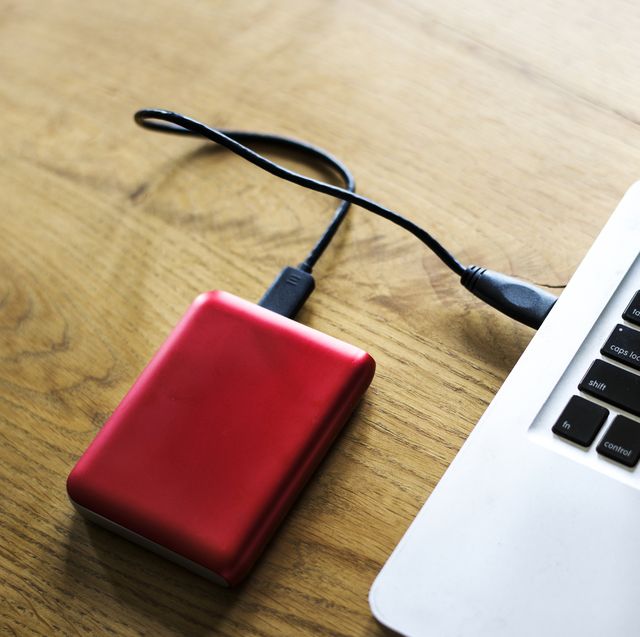What type of external drive is best for you? Here’s what you need to think about before buying one for your storage – including portability, durability and transfer speeds.
Storage sizes: How much stuff do you need to store? If you’re just transferring a couple of photos and files between laptops, an affordable 128 gigabyte (GB) USB drive like the SanDisk Ultra Flair is more than enough. However, that won’t be the case if you’re using it to save a backup of thousands of your family photos and videos, plus a couple of PlayStation 5 games – for that you’ll need terabytes (TB) of space (the latest Call of Duty is at least 150GB alone). Roughly, 1TB holds about 250 movies in HD quality or 250,000 12MP photos. Top tip: check the collective size of the items you need to store to get an idea of how much storage you need, but always add a bit more so you’ll have more space for the future.
Backups: An external hard drive can also be used to back up your entire PC or Mac. For Windows machines this is known as “system image” and the process is found under the Backup and Restore settings. On Mac, the name is “Time Machine.” Both have the same result: you backup your operating system, files, photos and videos directly onto the drive for safe keeping, then you can restore the full system at a future date.
Portability and durability: Not all external hard drives are designed to leave your home, while others are intentionally made to be slim, lightweight and even weather-resistant, So, you’ll need to think about how you plan on using your drive. If it will be popped inside a backpack on your commute, you will benefit from getting a model that has a sturdy metal case, but if it rarely leaves your desk then a decent plastic build will be enough.
HDD vs SSD: There are two types of external drives you’ll see when shopping around: hard disk drives (HDD) and solid-state drives (SSD). It gets complex, but the big difference is in how your photos and data are stored and accessed. Hard disk drives are generally more affordable and use mechanical spinning disks to store your data, while solid-state drives (SSD) don’t contain any moving parts, instead using flash memory chips to handle data. Because they do have moving parts, HDDs are more fragile and significantly louder in operation than SSDs – and they are also slower. You’ll pay more but if a fast data transfer speed is your priority, then an SSD is always the best option. We won’t go too in-depth into the jargon, but if the SSD drive uses NVMe storage tech you can be assured that you're getting the best transfer speeds around right now.
Compatibility: Most drives will work with Windows computers and laptops, but not all work with Macs, so double check the specs if you’re an Apple user. It may be the case that the drive works with both, but needs to be reformatted for Mac. Some drives – such as the SanDisk iXpand Flash Drive Go and the LaCie Mobile Drive – also work with iPads.
Security & privacy: Storing files that contain personal information? Buy a drive that offers some form of encryption. Some models, like the SanDisk Extreme, let you use software to add passwords to protect your data. Others, like the Samsung T7 Touch, take it to the next level by adding a fingerprint scanner to guard your files.
Transfer speed: Don’t just buy the biggest external drive you can find – also check out the transfer speed. This is how fast your files, photos and documents are sent from the drive to the computer. Most of the time you can tell by looking at what USB standard they use, with the speed itself being measured as either megabytes per second (Mbps) or gigabytes per second (Gbps). USB 2.0 is an older standard that will give you up to 480Mbps. The slightly more recent USB 3.1 gives you up to 10Gbps, while the newest USB 3.2 offers up to 20Gbps. We would always go for an external hard drive with the latest USB 3.2 standard if possible – and the majority of our top picks have this latest standard.




